The thought of chowing down on protein might conjure images of grunting muscleheads and buckets of chalky powder,
but there’s so much more to know about this vital macronutrient…
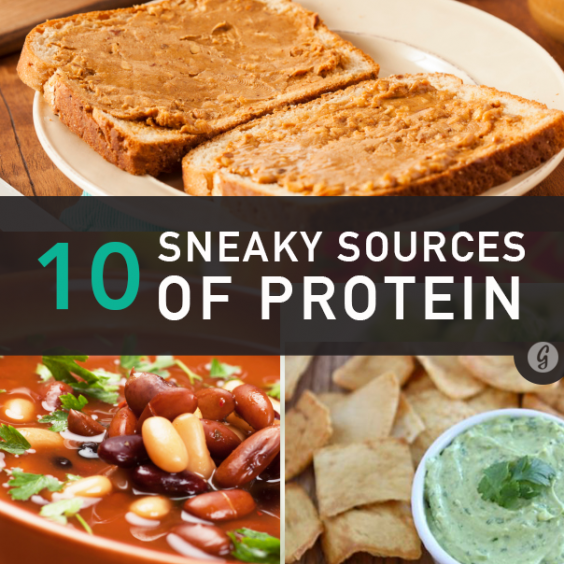
Protein is essential for everything from healthy hair and nails to, yes, encouraging muscle growth . Plus, it helps you feel fuller longer by taking more time to digest than carbs. Not a bad deal!
So how much protein should you aim to eat each day? It depends on your size and how active you are, says Tina Gowin, RD, CDN. The general guideline is that 15 percent of your daily calories should be comprised of protein, or about 75 grams (based on a 2,000-calorie diet) for the average adult. The Mayo Clinic more or less agrees, recommending that about 20 percent of daily calories come from protein. There’s not one perfect amount for everyone, so you might want to tinker around to find what works best for you. (You can use a online calculator if you’d like to see how these numbers translate to portions on your plate.) If you’re working out long and/or hard—say, training for a marathon—your protein needs will be slightly higher, which could mean increasing your intake by about five percent per day. If that seems like a lot of protein to fit into one day, don’t fret, Gowin says. From nuts and yogurt, to vegetables, beans, and grains,many foods have a least a bit of protein, and these different sources can realy add up throughout the day.
Many of us have heard that meat and eggs are good sources of protein (and they are), but there are alternatives (including plenty of vegan options!) to these standbys for every meal and all the snacks in between. Test out your culinary skills with our top choices and recipes for high-protein foods that are often overlooked.
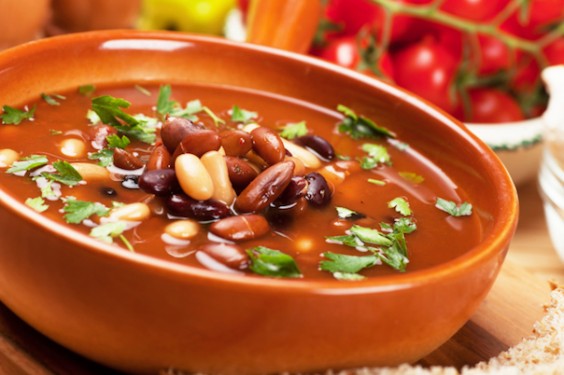
Beans
Protein: 15 grams per cup, cooked
Go-to recipe: Vegetarian Black Bean Soup
This yummy soup is perfect to keep you warm during these last days of winter, and it’s easy to customize to your taste. Top it with slicedavocado or Greek yogurt for an extra protein boost.

Green Peas
Protein: 8 grams per cup
Go-to recipe: Green Pea Guacamole
These little green guys are nothing to sniff at. Not only are they a great protein source, they’re also inexpensive and taste just as good frozen as fresh, so you can use them in a last-minute pinch. Swapping out some of the expensive avocado in this guac makes it more budget-friendly and keeps it delicious.
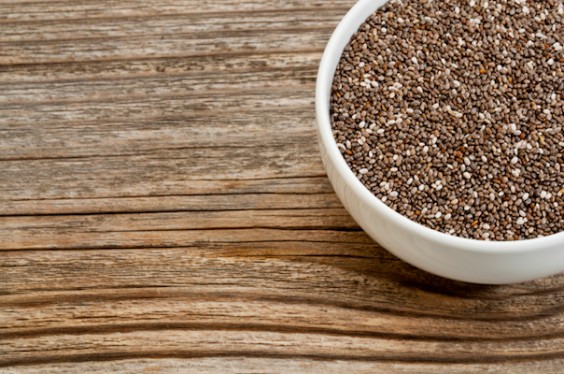
Chia Seeds
Protein: 4 grams per 2 tablespoons
Go-to recipe: Avocado Fruit Salad With Chia Yogurt Dressing
Who ever thought the day would come when we’d be eating something from an infomercial? Infamous thanks to their Chia Pet alter egos, these seeds will keep you feeling full and they’ll aid indigestion. You can sprinkle them on virtually any food, but we’re partial to this fruit salad. Loaded with fresh fruit like mangos and strawberries and topped with a yummy dressing, this makes a dessert you’ll feel great eating.

Cottage Cheese
Protein: 26 grams per cup
Go-to recipe: Baked Mac and Cheese
Cottage cheese is an excellent source of protein, but it can get boring on its own. In this lightened-up version of one of our favorite comfort foods, low-fat cottage cheese is used to make the dish feel decadent while remaining nutritious. Spinach and whole-wheat pasta round out the meal to make this feel—dare we say it?—healthful.

Greek Yogurt
Protein: 15 to 20 grams per 6-ounce container
Go-to recipe: Creamy Avocado Yogurt Dip
Greek yogurt is stripped of its liquid whey, which results in a more concentrated, thicker yogurt with a super creamy texture and double the amount of protein as regular yogurt. Here, it combines with heart-healthy avocado for a simple, fresh dip perfect for dunking carrots or as a guacamole alternative (but we won’t judge if you eat it solo!). Nutritional info from U.S. News & World Report
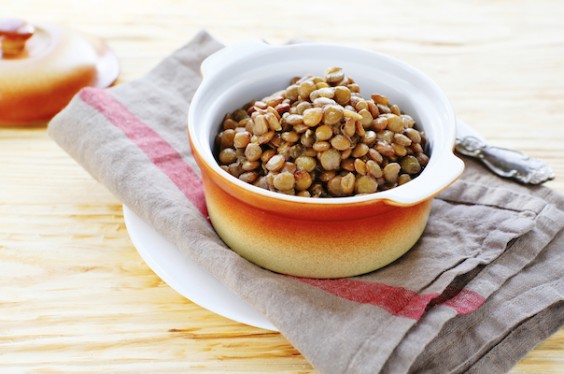
Lentils
Protein: 18 grams per cup, cooked
Go-to recipe: Balsamic-Glazed Pork With Lentils
Because lentils don’t need to be soaked before cooking, they’re quicker to prepare than other beans. Try these easy-on-the-wallet legumes in this salad with apples, celery, and lemon juice served alongside roasted pork in an entrée worthy of a dinner party.

Nut Butters
Protein: 7 to 8 grams per serving (often 2 tablespoons)
Go-to recipe: Soba Noodle Stir-Fry With Spicy Almond Butter Sauce
Who knew those PB&J sandwiches were packed with protein? Peanut and almond butters are great alternatives to eating straight nuts for protein—just look for brands that have just one or two ingredients (just nuts and, if you prefer it, salt ). These yummy condiments aren’t content to be relegated to breakfast or lunch—this almond buttery, veggie-packed stir-fry is perfect for a Meatless Monday dinner, and has just the right amount of kick to get your taste buds going.
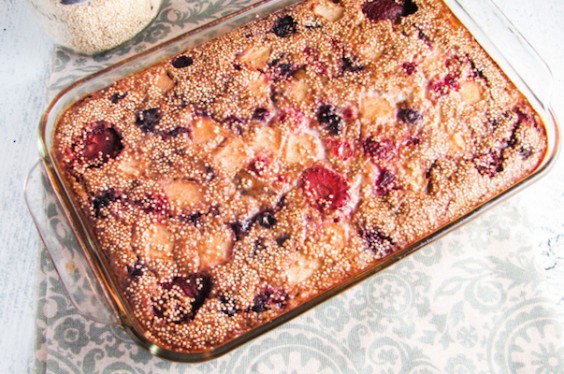
Photo by Katie Morris
Quinoa
Protein: 8 grams per cup, cooked
Go-to recipe: Quinoa Breakfast Bake
Get an early-morning protein blast with this warm breakfast. Just cook up one batch and you’ll be set for several days. And it’s simple to customize with your favorite fruits and nuts.
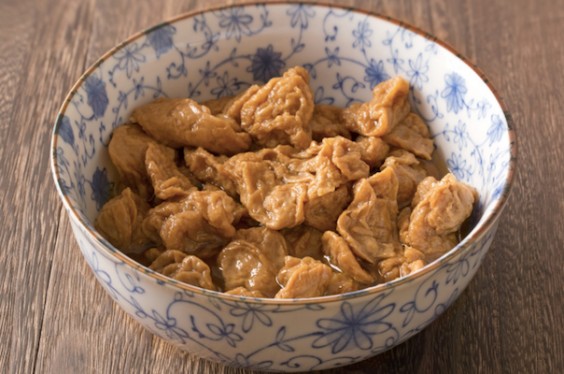
Seitan
Protein: 20 grams per serving
Go-to recipe: Garlic Pepper Seitan
Seitan, which is made from wheat gluten, takes on the chewy characteristics of meat in this Asian-inspired stir-fry, and the peppers and onions will make the kitchen smell delicious while cooking. Serve with brown rice or mashed potatoes for a complete(ly delicious) dinner. Nutritional info from SF Gate

Tempeh
Protein: 15 grams per serving
Go-to recipe: Tempeh Curry With Sweet Potatoes and Green Beans
Popular among vegetarians and vegans, this minimally processed fermented soybean product provides a whopping 15 grams of protein per serving. Take tempeh back to its Asian roots with this easy-peasy curry. Sweet potatoes and green beans provide extra nutrients and color while light coconut milk gives it a creamy feel without the added calories.
Unless otherwise noted, all nutritional information is taken fromhttp://nutritiondata.self.com.

















































